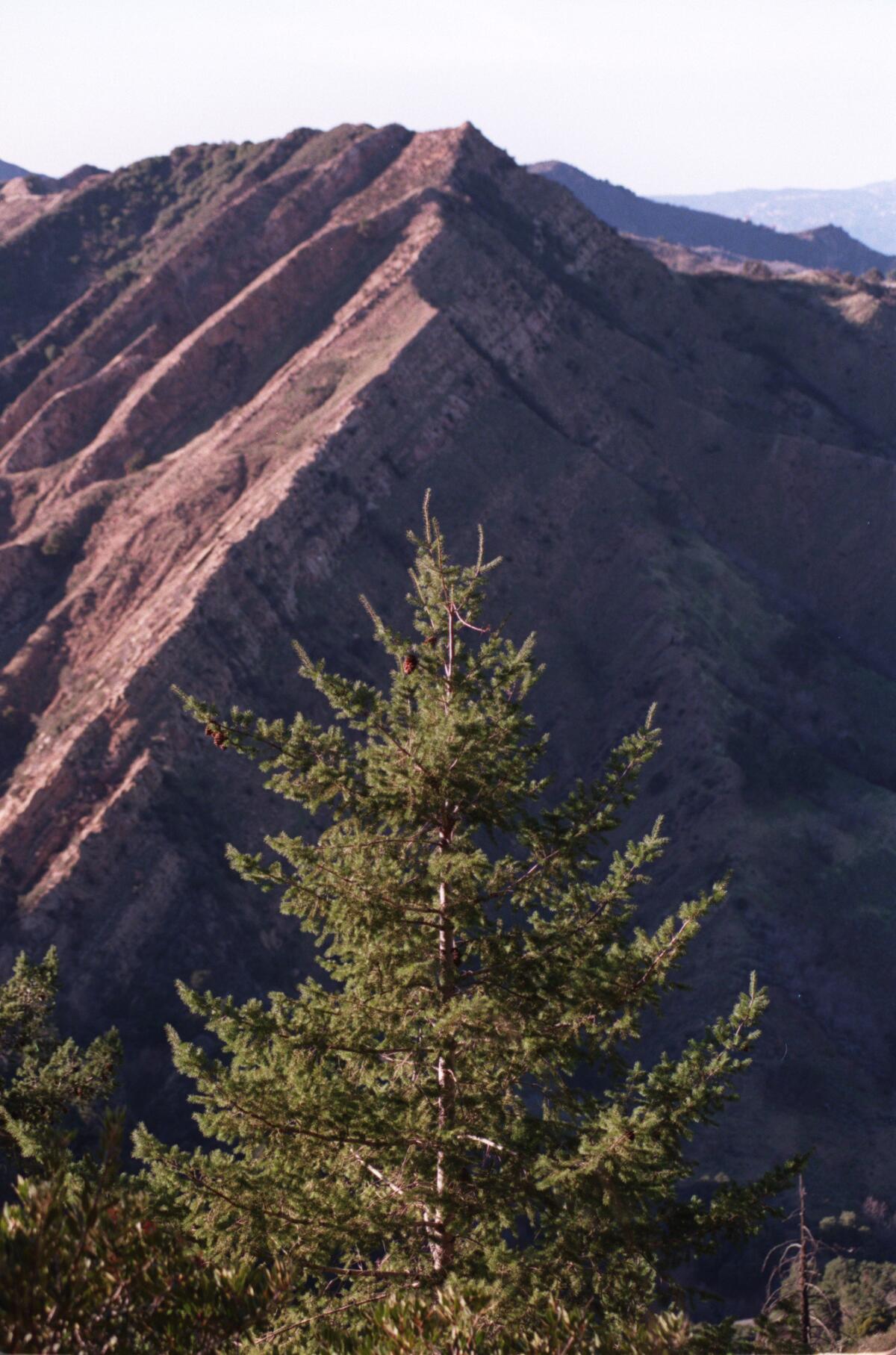Op-Ed: Forget the palm. Southern California’s truly iconic tree is the big cone spruce
- Share via
Particular trees give regions of California their sense of identity. The north coast has its magnificent redwoods. Massive sequoias evoke the great beauty of the Sierra Nevada. Joshua trees are the iconic feature of the Mojave Desert.
When people think of Southern California, it’s palm trees that come to mind, which is a shame. Palms are nonnative trees planted here by property developers hoping to lure Easterners looking for tropical climes. There is a noteworthy native tree species in Southern Californian, though few know its name.
Pseudotsuga macrocarpa is commonly called “big cone spruce” or “big cone Douglas fir,” though both names are deceiving; it is neither a spruce nor a fir, but a unique conifer. It is endemic to a limited range from the mountains above Santa Barbara down to northern San Diego County rimming the Los Angeles Basin. It has lived here for more than 50 million years and, according to fossil records, has changed little over that time.

The trees are easily seen in places like Newhall Pass or Cajon Pass growing mostly on north-facing slopes. The largest groves are in the Mt. Wilson area where they cling to the steep slopes and cliff faces of the rugged San Gabriel Mountains front range. There are also scattered groves on the desert slopes and the mountains bisected by Interstate 5 north of Castaic. They grow in low-elevation areas of mixed chaparral and oak woodlands or at higher elevations alongside conifers like Jeffrey pines.
Big cone spruce are well adapted to our dry, hot summers and their incredibly thick bark makes them fire-resistent. The real value of the trees is how they hold moisture in the soil. Water is precious in this environment, and the trees retain runoff from the heavy winter rains to get them through the year. Their long, outstretched branches resembling Christ the Redeemer statues, can also coax water out of the low clouds that blanket our sky in late spring.
Big cone spruce are well adapted to our dry, hot summers and their incredibly thick bark makes them fire-resistent.
In sheltered locations such as canyon bottoms they can grow as tall as a 16-story building with a girth that would fill an average-size dining room. And yet they were seldom harvested for lumber because their scattered groves are generally in difficult-to-access locations.
Fire is the biggest threat to these trees. It is not uncommon for a big cone spruce to survive a dozen fires over its life, but in recent years wildfires have gotten much more intense. The grove mortality rate was terribly high after the devastating Station fire of 2009. Unlike other plants that drop live seeds after burning, big cone spruce seeds are killed by fire. Their long-term survival is imperiled as the climate warms and droughts become more prolonged.
This Friday is National Arbor Day (though California marked the occasion last month), a day to appreciate our fruit and forest trees. So take a look alongside the roads if you’re driving up into the mountains from the city. Look for their dark gray bark and branches that somewhat awkwardly reach far out, tips occasionally loaded with dangling cones. Those are big cone spruce.
Shaped by the climate of Southern California — and unencumbered by heavy snowfall — they are not the stereotypical conifers. They wouldn’t make a good Christmas tree unless you are Charlie Brown. Each tree develops a somewhat distinct identity. Despite the contrasting conditions from wet to dry periods that have occurred over time, they are still content to be in this area and nowhere else. In a way, they have a lot in common with the people who live here.
Alan Coles is a volunteer crew leader who maintains hiking trails in the Angeles National Forest and a contributor to the website hikingproject.com.
Follow the Opinion section on Twitter @latimesopinion and Facebook
A cure for the common opinion
Get thought-provoking perspectives with our weekly newsletter.
You may occasionally receive promotional content from the Los Angeles Times.






